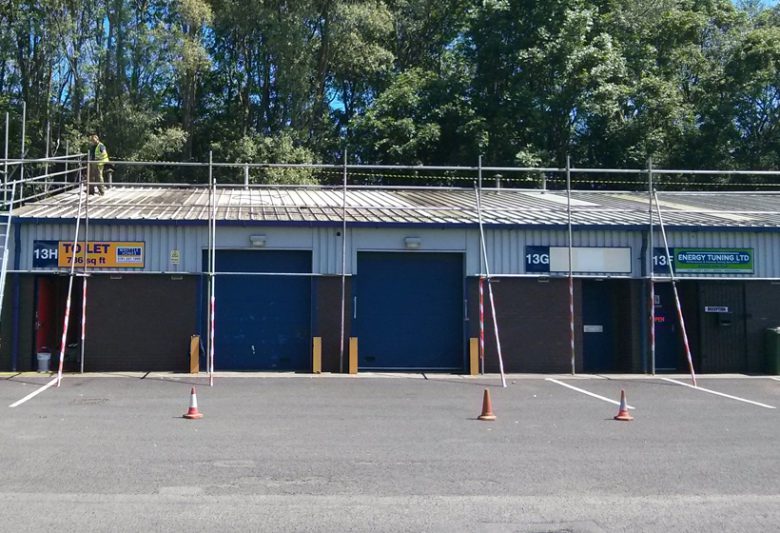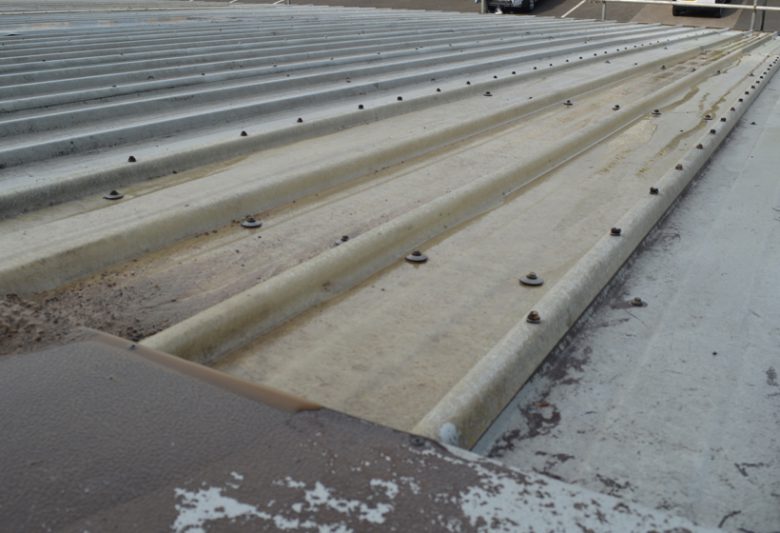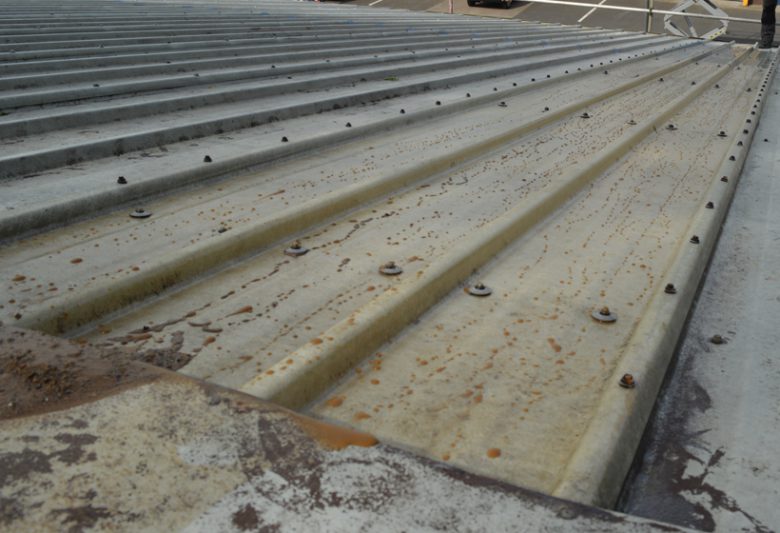How Can We Help You?
Please provide a few details below and we will respond to you as soon as possible.
Please provide a few details below and we will respond to you as soon as possible.
The aim of the experiment was to identify the differences between coating a roof light externally with Rust-Oleum Vernac Gloss and an uncoated roof light on the same roof, to establish the effect of the coating on water run-off and dirt collection.
The protective coating Vernac Gloss is a solvent based acrylic varnish. It is colourless and non-yellowing, it has high weather resistance properties and is extremely flexible.
Cladding Coatings were working on several units in the industrial estate and one of the unit roofs was chosen for the experiment. It was the one closest to the line of trees meaning it was dirtier and with more green algae.
Prior to the experiment the roof had been sprayed with a solution to kill algae and moss followed by a pressure spray clean to remove dirt and debris. Once the roof was clean and dry one coat of Vernac was applied to one of the roof light.



An equal scoop of standard sharp sand was each added to two buckets of tap water. Both buckets were then taken to the roof level. Each bucket was stirred before pouring to mix the sand, avoiding settlement in the bottom.


Using the same person and the same force and positioning of pouring, the first bucket was poured over one roof light. The second bucket was then poured over an identical roof light. Both roof lights were on the same roof close to each other and they were both in the same condition. The pitch of the roof was also the same for both roof lights.


The result was very clear, without any doubt there was an obvious difference between the run-offs. The effect of the Vernac Gloss could be seen immediately.
On the uncoated roof light the water sploshed down it and laid on the surface for longer and trickled steadily away. On the coated roof light the water immediately formed beads of water and run off quickly only leaving behind a few small beads.
The composition of water, two hydrogen atoms and an oxygen atom forms a polar molecule, these molecules like to stick together, cohesion. Adhesion is when the molecules stick to other substances such as dirt. Some non-polar substances such as oil and wax repel water.
On the uncoated roof light the forces of cohesion and adhesion were similar causing the water to spread out.
The coated surface repels the water and has a reduced amount of small scratches due to the Vernac layer. This means the water sticks to the dirt and more to itself not the surface. The surface coating prevents any water penetration.
This theory needs to be tested further but the initial findings show that the coating does reduce the amount of water remaining on the surface and it sticks to the dirt helping to clean the roof when it rains. The uncoated surface is more likely to retain water on the surface and leave dirt in any scratches and grooves.
The conclusion is that the coated roof light is likely to have a longer life, less maintenance requirements, stay cleaner and more transparent for longer and therefore allowing more light inside the building reducing both maintenance costs and energy costs with the reduced need of electric lighting. The additional cost of the coating will have a short payback time.

Download this experiment information as a pdf
Read more about Roof Light Refurbishment

When it comes to maintaining the exterior of a commercial or industrial building, the strategy you choose can dramatically influence long‑term performance, cost efficiency, and overall safety. Many property owners still rely heavily on reactive maintenance, stepping in only when…